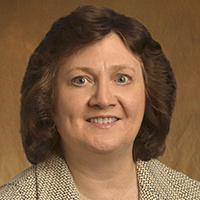We are pleased to announce our keynote speakers:
 Ayanna Howard |
 Sonia Martinez |
 Brian Sadler |
|
An investigative report: Examining trust in human-robot interaction scenarios View abstractAs robots become more fully interactive with humans during the performance of our day-to-day activities, the role of trust and algorithm transparency must be more carefully investigated. Trust conveys the concept that when interacting with robots, humans tend to exhibit similar behaviors as when interacting with other humans, and thus may misunderstand the risk associated with deferring their decisions to a robot. In this talk, two research efforts will be discussed that are tightly linked to human-robot trust and are realizable in the near-term. In the first effort, I will discuss research in healthcare robotics in which robots act as therapy coaches for individuals with motor disabilities. I will examine the characteristics that we intentionally embed in the robot design to improve trust and the resulting outcomes on both human performance and perception of the robot’s performance. In the second effort, I will discuss robots in emergency situations, such as could be used for search and rescue operations. I will discuss how humans react to these robots, specifically, how humans tend to overtrust robots when required to make decisions during time-critical scenarios. I will close with a discussion on possible ways we, as roboticists, could help mitigate these overtrust concerns.
|
A vision from the past to the future in multi-agent systems View abstractResearch in distributed robotics and multi-agent systems sprung around the late 90s, experiencing a fast growth which persists today. From the first problems of flocking, rendezvous and deployment, there has been a pleyade of techniques that address questions at the confluence of sensing, communications and controls. However, many challenges still remain pertaining the graceful degradation, security, shared autonomy, and scalability of these systems. In this lecture, I will make a concise overview of trends and techniques in the field, and illustrate with examples some of problems that still remain open. |
Distributed Collaborative Intelligent Systems View abstractHighly distributed and collaborative intelligent systems have broad potential for a variety of applications, including smart grid, distributed AI, and transportation. In this talk, motivated by first responder, disaster response, and peace keeping scenarios, we focus on mobile robotics consisting of air and ground platforms, high-performance computing, knowledge bases and sensors, all connected to local and remote humans. This requires resilient coordination, self-healing networks, learning, and rapid collaborative decision making with humans and machines. The problem difficulty is driven by environmental complexity, available infrastructure, and operational tempo, while design is complicated by heterogeneity, scale, and communications rate. We consider several component technologies and open questions, including distributed optimization and learning (e.g., non-convex), interplay of control and autonomous networking (e.g., with failing infrastructure), onboard and cloud-based computing tradeoffs, sensing and deep learning (e.g., feature representations), knowledge bases (e.g., semantic relationships), and human-machine information exchange (e.g., querying). Coupled with distributed control, convergence of these techniques will provide reach and restoration in future complex mega-cities under stress. |
And our invited speakers:
 Milind Tambe |
 Vijay Kumar |
 Lynne Parker |
|
AI for Social Good: Perspectives from multiagent systems research View abstractDiscussions about the future negative consequences of AI sometimes drown out discussions of the current accomplishments and future potential of AI in helping us solve complex societal problems. At the USC Center for AI in Society, CAIS, our focus is on advancing AI research and building assistants/decision aids in tackling wicked problems in society. This talk will highlight the goals of CAIS and the role of multiagent systems research in this work. First, I will focus on the use of AI for assisting low-resource communities, such as homeless youth. Modeling the uncertain social networks of such youth, I will outline our advances in influence maximization algorithms to help more effectively spread health information, such as for reducing risk of HIV infections. These algorithms have been piloted in homeless shelters in Los Angeles, and have shown significant improvements over traditional methods.I will also outline our multiagent modeling efforts for substance abuse prevention in this population. Second, I will outline the use of agent modeling, in particular, modeling “adversaries” for protection of forests, fish, and wildlife; learning models of adversary behavior allows us to predict poaching activities and plan effective patrols to deter them; I will discuss concrete results from tests in multiple national parks in Uganda that have led to removal of snares and arrests of poachers, potentially saving endangered animals. Finally, I will focus on the challenge of AI for public safety and security. Here, I will also briefly discuss our “security games” framework — based on computational game theory — which has led to decision aids that are in actual daily use by agencies such as the US Coast Guard, the US Federal Air Marshals Service and local law enforcement agencies to assist the protection of ports, airports, flights, and other critical infrastructure. I will also highlight a number of other projects at CAIS to illustrate the essential role of multiagent systems research in developing AI for social good.
|
Title TBD |
Along the road to multi-robot systems: Anecdotes and aspirations View abstractIn this talk, Lynne will share stories and anecdotes about the challenges, accomplishments, and as-yet-unfulfilled goals of multi-robot systems.
|